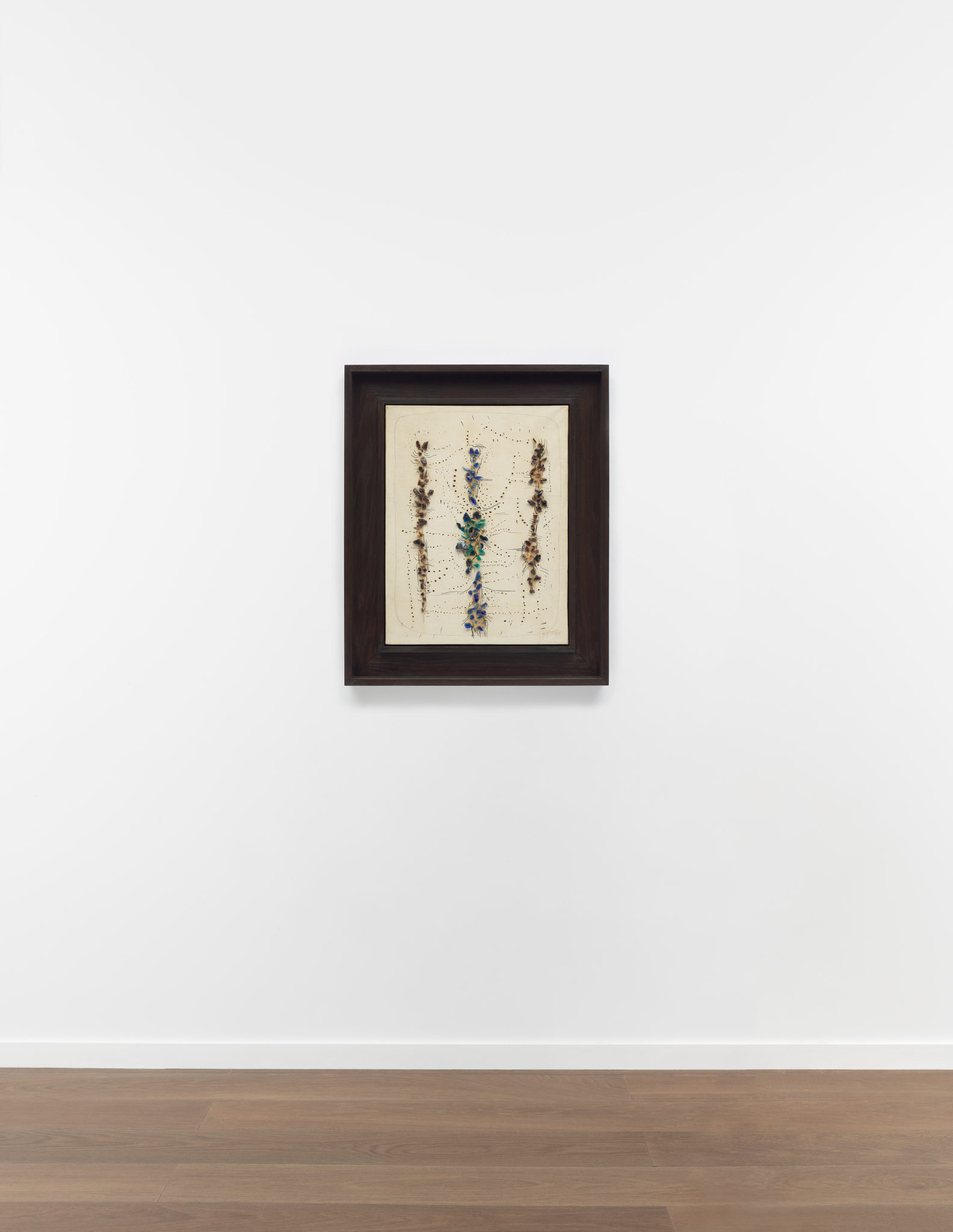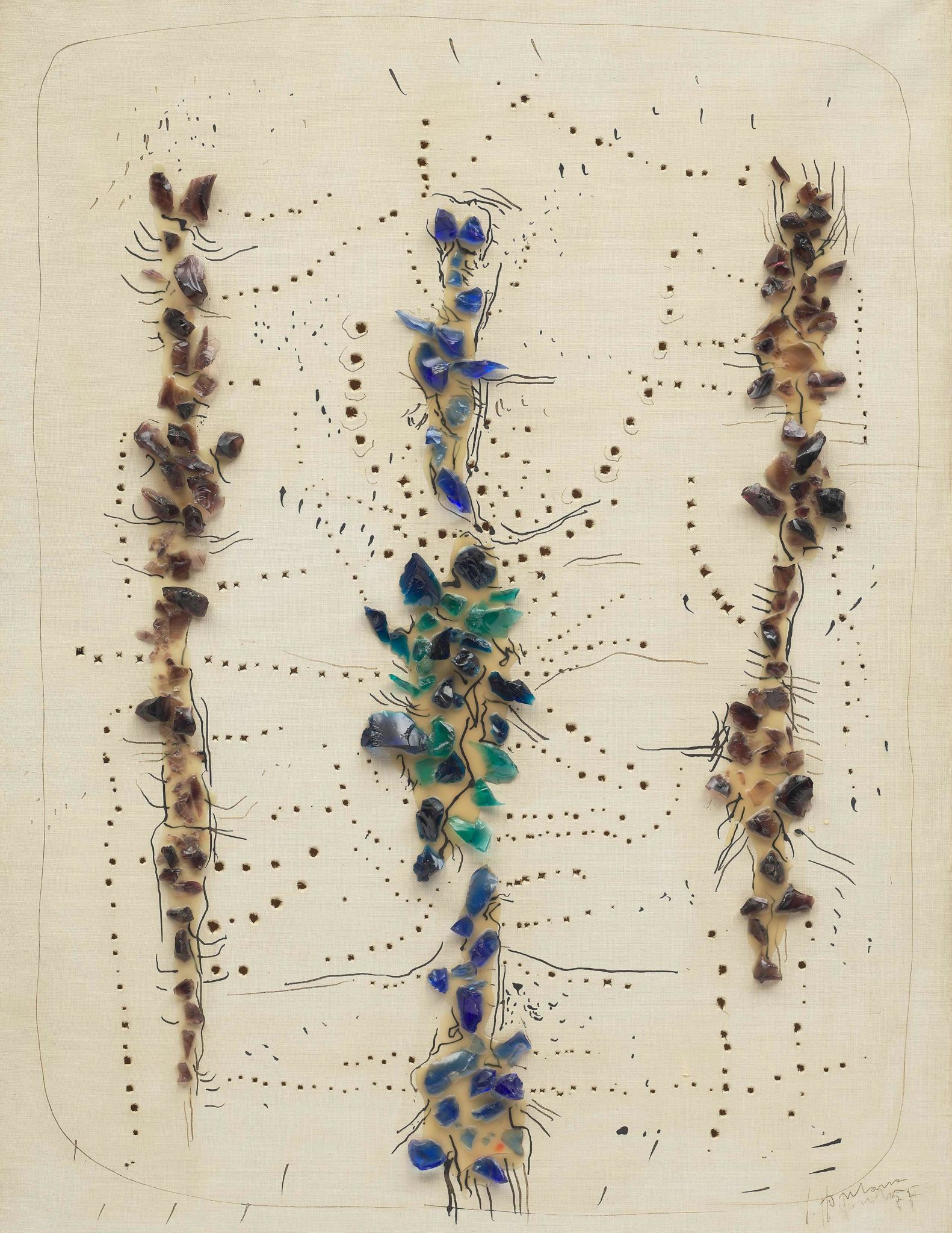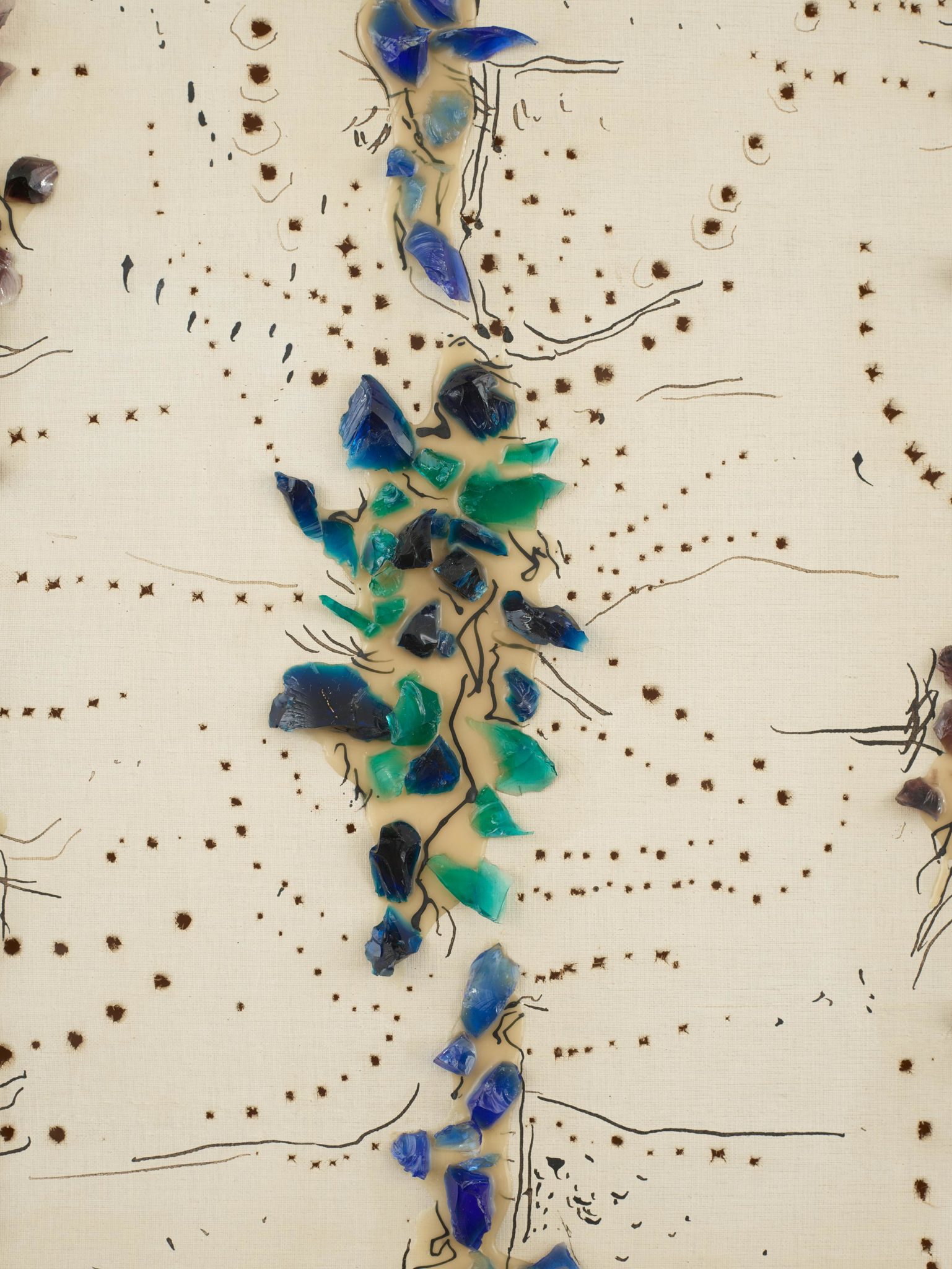Lucio Fontana
Concetto spaziale, 1955
Oil, ink, glass, and mixed media on canvas
25 1⁄2 × 19 11⁄16 inches (65 × 50 cm)
Signed and titled l. Fontana / 55 (bottom right)
© 2018 Fondation Lucio Fontana
Photo Tom Powel
Concetto spaziale (Spatial Concept), exemplifies Lucio Fontana’s radical challenge to the conventions of easel painting. The artist first used the term in 1946 to express the results of his so-called “spatial research,” which had led him to dismiss traditional painting and sculpture as antiquated “things of the past.” In his 1947 Manifesto dello Spazialismo (Manifesto of Spatialism), Fontana advanced a notion of art that actively engaged with its surroundings, breaking through the bounds of art’s autonomy to become one with the space in which the viewer lived. In 1949, he staged his first Spatial Environment in Milan: an immersive installation consisting of papier-mâché sculptures which he coated with fluorescent paint and suspended from the ceiling. Illuminated by ultraviolet light, the assemblage emitted an eerie glow that viscerally drew the viewer into the work.
With his buchi, or “holes,” Fontana pushed his notion of “spatialism” one step further, trespassing into a realm that, up until this point, had remained untouched: the space behind the picture plane. Priming canvas with a thin white wash, he repeatedly pierced it with an awl, creating dynamic patterns of holes that vary in shape and size, ranging from smooth and rounded to jagged and star-like. By physically violating the canvas’s integrity, Fontana opened it onto the infinity of what he termed the “the void.” In so doing, he realized his desire to “open up space, create a new dimension, tie in the cosmos, as it endlessly expands beyond the confining plane of the picture,” in his words.




